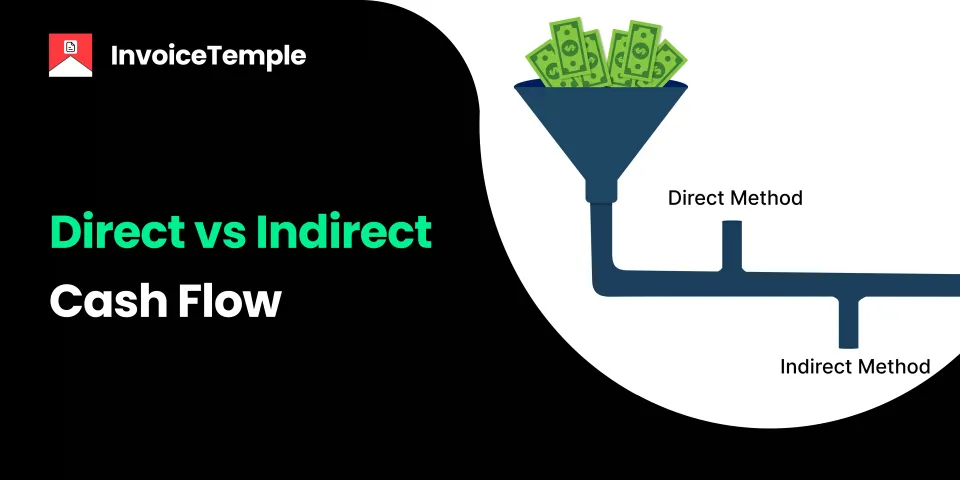Direct and Indirect Cash Flow Methods Explained with Advantages and Disadvantages

Various financial metrics must be monitored to identify the business performance and stability. One among them is the cash flow. A cash flow statement is one that talks about the business finances. There are two primary cash flow methods observed in business accounts: direct cash flow and indirect cash flow.
Both these cash flows have their own advantages as well as disadvantages. This blog explains both cash flow methods, including definitions and their pros and cons.
To start with, initially, let’s know what cash flow is.
Cash flow in a business is the amount that is coming in and going out of the business. It includes the cash that is received by the business and the cash that is paid by the business. The businesses can experience two kinds of cash flows: positive and negative cash flows. The positive cash flow is referred to as when the cash inflow is more than the cash outflow of the business. The negative cash flow is referred to as when the cash inflow is less than the cash outflow of the business.
Cash Flow Statement: An Overview
A cash flow statement is a financial statement that showcases the financial stability and performance of the business by including the income statement and balance sheet of the business's finances. This cash flow statement lists three crucial business activities, and they are operating, investing, and financing.
This cash flow can be calculated using two main methods, and they are the direct cash flow and the indirect cash flow method. Let’s explore both these methods more deeply.
What is the Direct Cash Flow Method?
The direct cash flow method shows all the payments made by the business and received by the business over a specific period. All transactions made by the business are listed, and a clear view of the operating cash flow is obtained here.
The direct cash flow value can be determined by adding all the cash inflows and subtracting all the cash outflows of the business. And the result is the net direct cash flow value.
Advantages:
1. This method helps in getting a clear view of the business cash flow.
2. With the real-time insights obtained by this method, the business can know about the cash movement and the financial stability, and ensure that it meets the immediate needs of the business.
3. This method can be used for generating accurate financial reports for the business.
Disadvantages:
1. For an effective direct cash flow method, minute tracking of every transaction is needed, which is a time-consuming process.
2. This method has a higher chance of error occurrence.
3. All kinds of businesses cannot benefit from this direct method due to its complexity.
What is the Indirect Cash Flow Method?
The indirect cash flow method is the contrast of the direct cash flow method. It is the method of preparing the cash flow statement by initiating it from net income and then making essential adjustments to reflect the cash flow movements. Common adjustments are made in depreciation value, inventory, accounts payable, accounts receivable, etc.
Advantages:
1. Here cash flow value is obtained from the information that is already present in the balance sheet and income statement. So, no extra efforts are needed here to calculate it.
2. This is the most preferred method for generating financial reports for the business.
3. It gives a better understanding of the financial operations, working capital, and various elements that affect liquidity.
Disadvantages:
1. The indirect cash flow can show an inaccurate depiction of the cash availability, which may create complications when immediate cash is needed.
2. The real-time cash tracking cannot be done so accurately here, so it may be inefficient for the business that needs accurate cash transaction data.
Both the direct and indirect cash flow methods are crucial, but are used based on the requirements of the business. So, the choice completely depends on the business owners. Whatever methods may be used, an understanding of the financial position of the business is crucial for obtaining stability.
